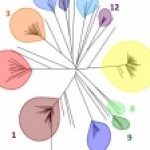Link to Pubmed [PMID] – 21562112
J. Clin. Microbiol. 2011 Jul;49(7):2572-7
Multilocus sequence typing (MLST) has been successfully applied to the epidemiology of Candida albicans isolates not only within the hospital setting but also in multiple locations nationwide. We performed MLST to investigate the genetic relatedness among bloodstream infection (BSI) isolates of C. albicans recovered from 10 Korean hospitals over a 12-month period. The 156 isolates yielded 112 unique diploid sequence types (DSTs). While 95 DSTs were each derived from a single isolate, 17 DSTs were shared by 61 isolates (39.1%). Interestingly, 111 (71.1%) isolates clustered within previously known clades, and 29 (18.6%) clustered within a new clade that includes strains of Asian origin previously typed as singletons. This MLST study was complemented by restriction endonuclease analysis of genomic DNA using BssHII (REAG-B) in order to evaluate whether strains with identical DSTs and originating from the same hospital corresponded to nosocomial clusters. Importantly, only those isolates with a strong epidemiological relationship showed ≥95% identical REAG-B types. Our results indicate that REAG-B typing can be complementary to MLST but should be limited to the investigation of isolates of identical DSTs and when interhuman transmission is suspected.



